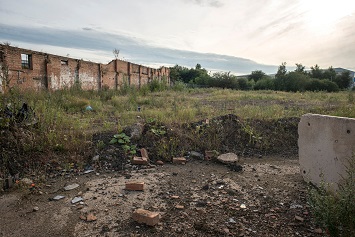In its FY 2018-2022 Strategic Plan, the EPA listed the cleanup of contaminated properties and their return to productive economic and community use as one of its top three priorities. Among its goals, the Agency stated that it wants to make 255 additional Superfund sites and 3,420 additional brownfield sites ready for anticipated use by September 2022.
Site revitalization is frequently complicated by the liability concerns of bona fide prospective purchasers (BFPPs), parties who are interested in buying formerly contaminated sites. Over the years, the EPA has issued many documents explaining its obligations under federal law regarding liability, as well as policies it has established to encourage remediation and economic recovery while ensuring that the public’s interest is protected. One topic of particular relevance to the taxpayer is the EPA’s policy on windfall liens. The policy was most recently summarized in the Agency’s December 2019 Revitalization Handbook: Addressing Liability Concerns at Contaminated Properties.
What Is a Windfall Lien?
A lien is a claim on a property to ensure that the property owner pays a debt. Regarding the EPA and contaminated sites, a windfall lien is one covering either the increase in the fair market value of that property (that is, the fair market value of the property above the fair market value of the property as it existed before the response action) attributable to the EPA’s cleanup efforts or the EPA’s unrecovered response costs, whichever is less. Under the Comprehensive Environmental Response, Compensation, and Liability Act (CERCLA), there are two types of windfall liens. CERCLA Section 107(r) applies to properties that are or may be acquired by BFPPs. (Under Section 107(r), a BFPP is not liable as an owner or operator for CERCLA response costs.) Also, CERCLA Section 107(l) applies to properties owned or once owned by potentially responsible parties. Both types of liens can only arise on properties where the United States spends money cleaning up the property.
2003 Guidance
In a 2003 guidance document the EPA still relies on, the Agency and the U.S. Department of Justice listed three factors that may lead the EPA to perfect a windfall lien. To protect its windfall lien position against other liens or mortgages, the EPA may perfect the lien. This means the Agency files or records its lien with the appropriate legal authority—generally the county where the property is located. The three factors are:
- The EPA has substantial unreimbursed cleanup costs the Agency is unlikely to recover from liable parties.
- There is a likelihood that a BFPP will reap a significant windfall as a direct result of the Agency’s expenditure of response costs at a site (e.g., the EPA conducts a cleanup at a site during a BFPP’s ownership).
- A real estate transaction structured to permit: (a) a BFPP to retain an increase in fair market value resulting from the EPA’s cleanup action (e.g., a liable owner sells property to a BFPP at below the fair market value); or (b) a liable owner to sell property to avoid the consequences of CERCLA liability (e.g., sales that avoid the EPA’s perfection of a Section 107(l) lien against the property or during the process of the EPA’s perfection of a CERCLA lien.
Valuation
The EPA says it does not wish to discourage redevelopment of contaminated properties. Accordingly, the Agency will generally seek only the increase in fair market value attributable to a response action that occurs after a BFPP acquires the property at the fair market value.
“Congress sought to avoid windfalls at taxpayers’ expense,” the EPA stated in its 2003 guidance. “By providing bona fide prospective purchasers with protection from CERCLA liability, Congress also sought to encourage beneficial reuse of contaminated properties. EPA believes an enforcement discretion settlement policy of generally seeking only the increase in fair market value that occurs after a bona fide prospective purchaser assumes ownership strikes the appropriate balance between these objectives.”
Nonaction
The decision to perfect a windfall lien is within the EPA’s enforcement discretion. Also, there are several conditions under which the EPA may choose not to perfect. For example:
- The Agency may not perfect if all the increase in the fair market value attributable to the EPA’s response action occurs before a BFPP acquired the property at the fair market value. (However, even under that scenario, the EPA may file a windfall lien on the property where there are substantial unreimbursed costs—for example, the EPA’s response action results in a significant increase in the property’s fair market value; there are no viable, liable parties from whom the EPA could recover its costs; and a response action occurs while the property is owned by a person who is exempt (other than a BFPP) from CERCLA liability.)
- If a BFPP wants to perform cleanup work at a contaminated site of federal interest that exceeds the BFPP’s statutory requirements to maintain its liability protection (e.g., reasonable steps), the Agency may provide a release and waiver of any windfall lien.

